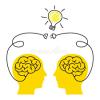
Breaking News
 Christmas Truce of 1914, World War I - For Sharing, For Peace
Christmas Truce of 1914, World War I - For Sharing, For Peace
 The Roots of Collectivist Thinking
The Roots of Collectivist Thinking
 What Would Happen if a Major Bank Collapsed Tomorrow?
What Would Happen if a Major Bank Collapsed Tomorrow?
Top Tech News
 Travel gadget promises to dry and iron your clothes – totally hands-free
Travel gadget promises to dry and iron your clothes – totally hands-free
 Perfect Aircrete, Kitchen Ingredients.
Perfect Aircrete, Kitchen Ingredients.
 Futuristic pixel-raising display lets you feel what's onscreen
Futuristic pixel-raising display lets you feel what's onscreen
 Cutting-Edge Facility Generates Pure Water and Hydrogen Fuel from Seawater for Mere Pennies
Cutting-Edge Facility Generates Pure Water and Hydrogen Fuel from Seawater for Mere Pennies
 This tiny dev board is packed with features for ambitious makers
This tiny dev board is packed with features for ambitious makers
 Scientists Discover Gel to Regrow Tooth Enamel
Scientists Discover Gel to Regrow Tooth Enamel
 Vitamin C and Dandelion Root Killing Cancer Cells -- as Former CDC Director Calls for COVID-19...
Vitamin C and Dandelion Root Killing Cancer Cells -- as Former CDC Director Calls for COVID-19...
 Galactic Brain: US firm plans space-based data centers, power grid to challenge China
Galactic Brain: US firm plans space-based data centers, power grid to challenge China
 A microbial cleanup for glyphosate just earned a patent. Here's why that matters
A microbial cleanup for glyphosate just earned a patent. Here's why that matters
 Japan Breaks Internet Speed Record with 5 Million Times Faster Data Transfer
Japan Breaks Internet Speed Record with 5 Million Times Faster Data Transfer
New Combination of Wood Fibers and Spider Silk Could Rival Plastic After It Outperforms in Tests

Researchers have developed a unique new material out of wood and spider silk—and since it outperforms most of today's synthetic and natural materials by providing high strength, stiffness, and increased toughness, scientists say it could one day replace plastic.
Achieving strength and extensibility at the same time has so far been a great challenge in material engineering: increasing strength has meant losing extensibility and vice versa.
Now Aalto University and VTT Technical Research Centre of Finland researchers have succeeded in overcoming this challenge by seeking inspiration from nature.
The researchers created a truly new bio-based material by gluing together wood cellulose fibers and the silk protein found in spider web threads. The result is a very firm and resilient material which could be used in the future as a possible replacement for plastic, as part of bio-based composites and in medical applications, surgical fibers, textile industries, and packaging.
According to Aalto University Professor Markus Linder, nature offers great ingredients for developing new materials, such as firm and easily available cellulose and tough and flexible silk used in this research. The advantage with both of these materials is that, unlike plastic, they are biodegradable and do not damage nature the same way micro-plastic do.
"We used birch tree pulp, broke it down to cellulose nanofibrils, and aligned them into a stiff scaffold. At the same time, we infiltrated the cellulosic network with a soft and energy dissipating spider silk adhesive matrix," says Research Scientist Pezhman Mohammadi from VTT.

 The State's Last Stand
The State's Last Stand


